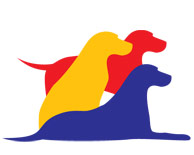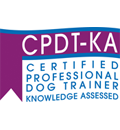Canine anal sacs are nature’s of way of helping a dog mark its’ territory. When your dog passes a stool, the sphincter muscles contract and by pressing against the anal glands, excretes an oily liquid.
Problems occur when the glands either are producing more liquid than can be expressed or emptied from the glands or the stool and sphincter muscles are not applying enough pressure.
The most noticeable symptom of problems with canine anal sacs is when your dog scoots its rear end across the floor. He does this to help relieve the pressure and any pain that he or she is feeling. If infection has set in then you might notice a thinner liquid, yellowish color and a foul smell. Your veterinarian will need to drain the gland and apply antibiotics.
If left untreated then an abscess could form, which means that the liquid is trapped in the anal sac. Symptoms could include fever and reddish or purple areas and swelling at the anus. Eventually the pressure will cause the gland to rupture. At this point to bring relief your veterinarian will have to lance an opening. Treatment includes repeated flushing of the lanced area, and oral antibiotics.
Tips for Helping Your Dog Avoid Problems with the Canine Anal Sacs
1. Check Your Dog’s Anal Sacs Frequently: Ask your veterinarian to check both sacs at every checkup. You can check yourself by looking at the 5 o’clock and 7 o’clock position around the anus. The sacs are the size of a kidney bean. If swollen you will see little bulges beneath the skin.
2. Express The Sacs: You can empty the sacs by gently pressing against skin on each side of the sac. This can be messy so wear protective gloves and possibly do it in the bath. Only do this is you believe your dog is having trouble emptying them naturally.
3. Add fiber to the diet: Owners who give table scraps to their dogs are not doing them any favors. Scraps lead to soft stools. Only firm stools have the necessary pressure to help the dog anal glands empty. Instead provide your dog with a fiber supplement, fiber treats or a high fiber commercial dog food.
4. Consider Herbal Supplements: Certain supplements such as Taraxacum officinale (Dandelion) and Matricaria recutita (German Chamomile) are known to support the glands. These are natural products and should help your pet. Check with your veterinarian so that he or she can determine if your dog is making any progress with these types of progress.
Jeff Grill is an editor of the Dog Health Handbook and has written hundreds of articles on canine health problems.
Article Source: http://EzineArticles.com/?expert=Jeffrey_Grill http://EzineArticles.com/?Canine-Anal-Sacs—Tips-For-Dog-Anal-Sac-Care&id=1972274



